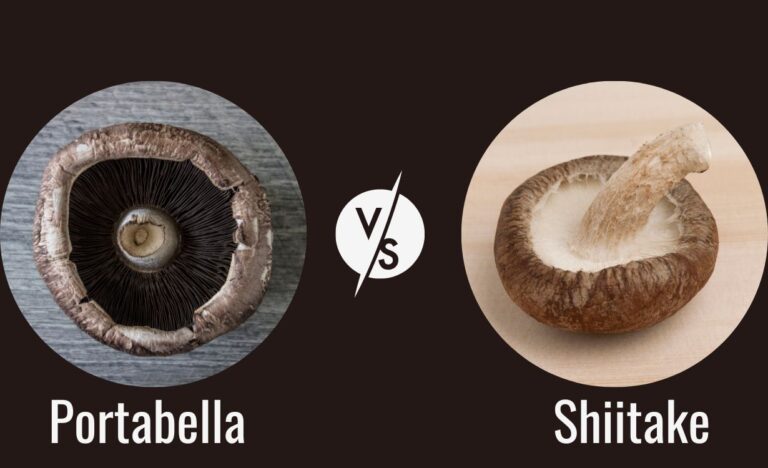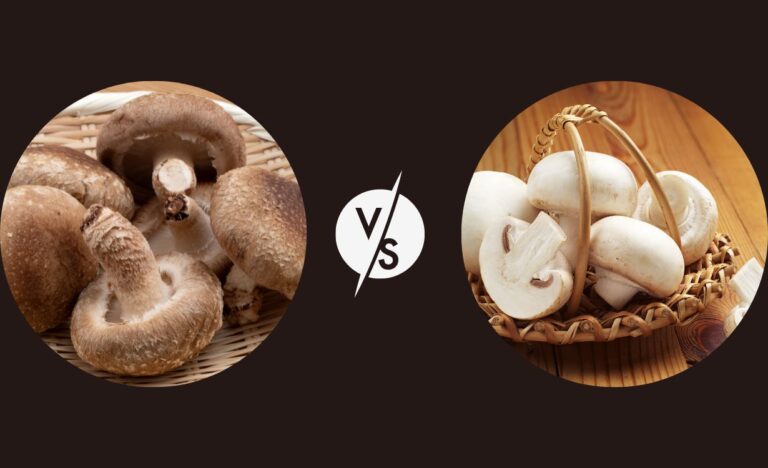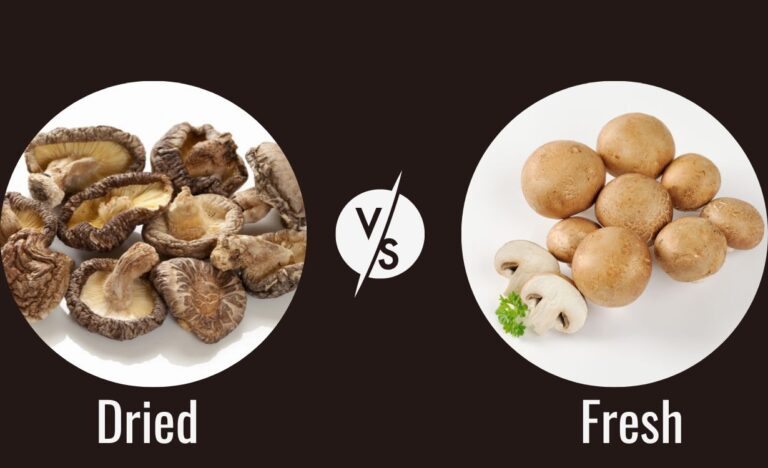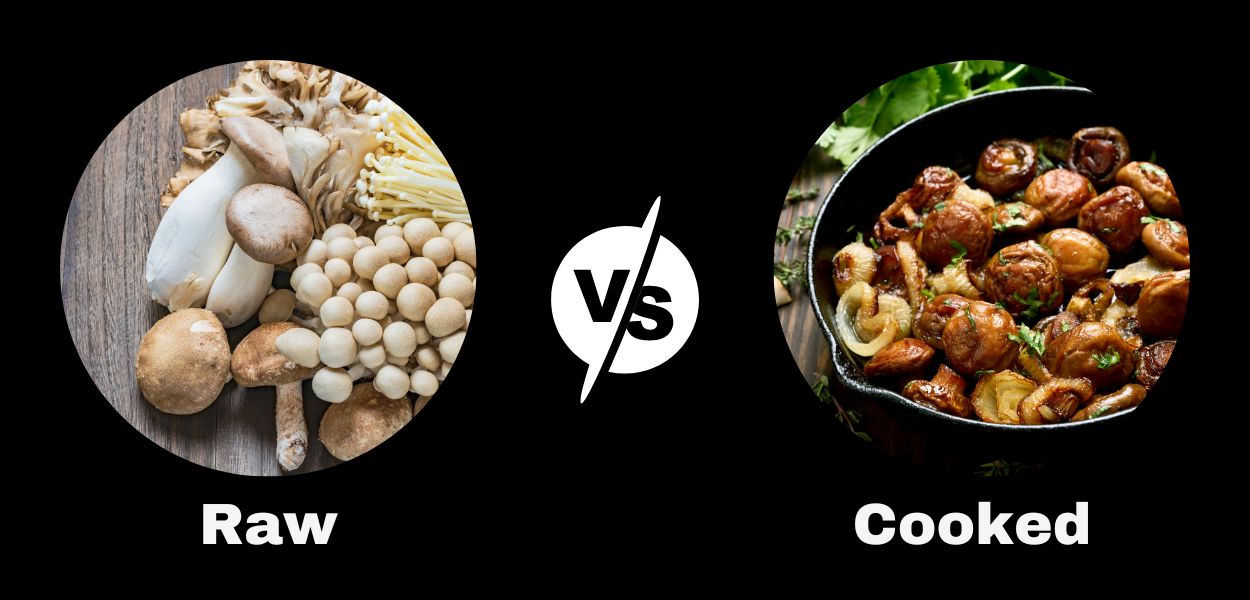
Mushrooms are a staple ingredient in many cuisines around the world. They are not only flavorful and versatile but also have numerous health benefits. However, the debate between consuming raw vs cooked mushrooms has been a longstanding one. While some people prefer to eat them raw, others argue that cooking mushrooms can enhance their taste and nutritional value. In this blog post, we will explore the differences between raw and cooked mushrooms, their impact on health, and which one is better to consume. By the end of this article, you will have a better understanding of how to incorporate mushrooms into your diet in the most beneficial way.
Raw Mushrooms vs Cooked Mushrooms
Mushrooms are a great source of nutrients, vitamins, and antioxidants, making them a healthy addition to any diet. However, the way they are prepared can have a significant impact on their nutritional value, taste, and texture. In this section, we will explore the differences between raw and cooked mushrooms.
Raw mushrooms are mushrooms that have not been cooked or heated in any way. They are often sliced and used in salads, sandwiches, or as a topping on pizza. Cooked mushrooms, on the other hand, have been exposed to heat, which can alter their texture and flavor. They can be sautéed, roasted, grilled, or boiled, depending on the recipe.
Differences in Taste, Texture, and Nutritional Value
Raw mushrooms have a firmer texture and a slightly earthy taste. Cooking mushrooms can soften their texture and enhance their umami flavor. Heat breaks down the chitin in mushrooms, making them easier to digest and absorb their nutrients. However, cooking can also cause a loss of water-soluble nutrients like vitamin C and folate.
Pros and Cons of Consuming Raw Mushrooms

Pros:
- Nutrient Retention: Raw mushrooms contain all the nutrients in their natural state, which means they retain all the vitamins, minerals, and antioxidants that can be lost during cooking.
- Low-Calorie: Raw mushrooms are low in calories and high in fiber, making them an excellent addition to a healthy diet, especially for weight loss.
- Convenience: Raw mushrooms are easy to prepare and can be eaten as a snack, in salads, or used as a garnish for other dishes.
- Immune-Boosting: Raw mushrooms are a great source of beta-glucans, which can boost the immune system and reduce inflammation.
- Potent Anti-Cancer Properties: Raw mushrooms contain compounds that have been shown to have anti-cancer properties, such as ergothioneine and polysaccharides.
Cons:
- Digestive Discomfort: Some people may experience digestive discomfort, such as bloating or gas when consuming raw mushrooms due to their tough texture and difficult-to-digest chitin content.
- Risk of Contamination: Raw mushrooms can harbor harmful bacteria and pathogens that can cause foodborne illnesses if not properly cleaned and prepared.
- Limited Flavor Profile: Raw mushrooms can have a slightly bitter or earthy taste, which may not be to everyone’s liking.
- Limited Nutrient Absorption: While raw mushrooms contain all the nutrients in their natural state, some of these nutrients may be difficult for the body to absorb due to their tough cell walls.
- Risk of Toxicity: Certain types of raw mushrooms, such as wild mushrooms, can be toxic and potentially deadly if consumed without proper identification and preparation.
Pros and Cons of Consuming Cooked Mushrooms
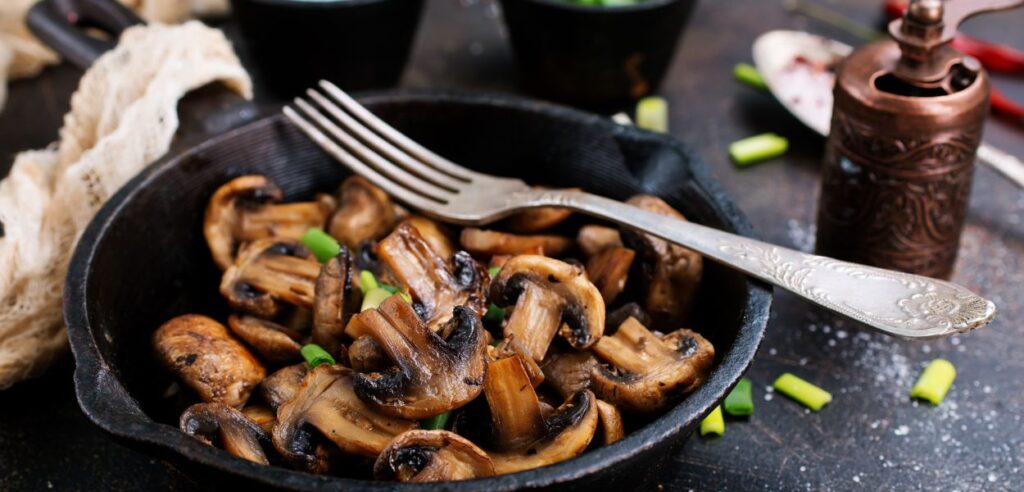
Pros:
- Improved Nutrient Absorption: Cooking mushrooms breaks down their tough cell walls, making it easier for the body to absorb their nutrients.
- Enhanced Flavor: Cooking mushrooms can enhance their flavor profile and make them more appealing to eat.
- Versatility: Cooked mushrooms can be used in a wide range of dishes, including soups, stews, sauces, and stir-fries.
- Reduced Risk of Contamination: Cooking mushrooms can kill harmful bacteria and pathogens, reducing the risk of foodborne illnesses.
- Improved Digestion: Cooking mushrooms can make them easier to digest, reducing the risk of digestive discomfort.
Cons:
- Nutrient Loss: Cooking mushrooms can cause them to lose some of their nutrients, especially if overcooked or boiled.
- Calorie Intake: Some cooking methods, such as frying or sautéing, can add extra calories and unhealthy fats to the dish.
- Time-Consuming: Cooking mushrooms can be time-consuming, requiring additional preparation and cooking time.
- Reduced Immune-Boosting Properties: Cooking mushrooms can reduce their beta-glucan content, which is responsible for their immune-boosting properties.
- Risk of Overcooking: Overcooking mushrooms can result in a loss of texture and flavor, making them unappetizing.
However, both raw and cooked mushrooms have their advantages and disadvantages. While raw mushrooms may retain more nutrients, they can be difficult to digest, and cooking can enhance their flavor and nutritional value. It’s important to include a variety of mushroom preparations in your diet to get the most benefits.
Health Benefit of Mushrooms Cooked vs Raw
Mushrooms are packed with essential vitamins and minerals that can provide numerous health benefits. They are rich in antioxidants, and dietary fiber, and low in calories, making them an ideal food choice for people who want to maintain a healthy lifestyle. However, the nutritional content of mushrooms can be affected by cooking. Let’s take a closer look at the health benefits of mushrooms and the differences between raw and cooked mushrooms.
Comparison of Nutritional Value In cooked Mushrooms vs Raw
Mushrooms are a good source of vitamin D, which is essential for bone health and immune function. They are also rich in B vitamins such as riboflavin, niacin, and pantothenic acid, which help to support energy metabolism and maintain healthy skin, hair, and nails. Additionally, mushrooms contain selenium, potassium, and copper, which are important minerals that support the immune system, maintain healthy blood pressure levels, and support the body’s antioxidant defense system.
| Nutrient | Raw Mushrooms (6 Large) | Cooked Mushrooms (6 Large) |
|---|---|---|
| Calories | 24 | 20 |
| Fiber | 1.1g | 1.6g |
| Protein | 3.3g | 1.5g |
| Fat | 0.35g | 0.35g |
| Sugar | 2.1g | 1.7g |
| Vitamin C | 2.3mg | 2.9mg |
| Vitamin D | 0.2mg | 0.1mg |
| Thiamin (B1) | 0.09mg | 0.04mg |
| Riboflavin (B2) | 0.4mg | 0.18mg |
| Niacin (B3) | 3.9mg | 1.9mg |
| Vitamin B6 | 0.12mg | 0.05mg |
| Folate (B9) | 18mcg | 9mcg |
| Calcium | 3mg | 4mg |
| Iron | 0.5mg | 1.25mg |
| Zinc | 0.6mg | 0.6mg |
| Magnesium | 9mg | 7mg |
| Phosphorus | 86mg | 41mg |
| Potassium | 277mg | 208mg |
| Sodium | 9mg | 2mg |
Table: Comparison of Nutritional Value in Raw and Cooked Mushrooms
Cooked mushrooms are easier to digest and increase levels of beta-glucans which enhance immune function and reduce inflammation. The table above compares the nutrient content of six raw and six cooked mushrooms, with cooked mushrooms losing up to half their nutrients. Raw mushrooms are higher in protein, riboflavin, vitamin B6, folate, and thiamin while cooking increases the amount of antioxidant vitamin C but decreases vitamin D by half. Boiling mushrooms depletes minerals, but cooking increases calcium, zinc, and iron. To maximize nutrient retention, avoid overcooking, steam or microwave, and add a small amount of oil before cooking.
Effect of Cooking on Mushroom’s Nutrient Content
The cooking method used can also affect the nutrient content of mushrooms. Boiling mushrooms can cause some water-soluble vitamins to leach out, while frying or sautéing can cause them to lose some of their nutritional value due to the high heat. However, steaming or microwaving mushrooms can help to retain more of their nutrient content.
Best Ways to Cook Mushrooms for Maximum Nutrient Retention
To get the most health benefits from mushrooms, it’s best to cook them in a way that preserves their nutritional value. Steaming or microwaving mushrooms for a short period of time can help to retain their nutrients. Roasting mushrooms in the oven can also be a good option, as long as the temperature is not too high. It’s important to avoid overcooking mushrooms, as this can cause them to lose their nutritional value.
However, mushrooms are a nutritious and delicious food that can provide numerous health benefits. While raw mushrooms may contain more of some nutrients, cooking mushrooms can enhance their flavor and make them easier to digest, allowing the body to absorb more nutrients. By choosing the right cooking method, you can maximize the nutritional content of mushrooms and reap all their health benefits.
Mushrooms in Meatloaf Raw vs Cooked Comparison
Mushrooms are a popular ingredient in meatloaf recipes, but the question of whether to use raw or cooked mushrooms remains. Let’s explore the differences between using raw or cooked mushrooms in meatloaf.
Raw mushrooms have high water content and can release moisture during cooking, which can make the meatloaf soggy. On the other hand, cooked mushrooms have a more concentrated flavor and can add depth to the meatloaf. They also have a firmer texture that can complement the meat’s texture.
Effect on Flavor and Texture
Raw mushrooms in meatloaf can have a mild flavor that doesn’t overpower the other ingredients. However, the texture can be slightly rubbery, and they can be difficult to chop finely enough to blend seamlessly into the meat mixture. Cooked mushrooms, on the other hand, can be caramelized to bring out a deeper umami flavor. They can also be easily chopped or pulsed in a food processor to create a smooth mixture.
Food Safety Considerations
Raw mushrooms can potentially contain harmful bacteria, such as E. coli and Salmonella, which can cause food poisoning. However, cooking mushrooms to an internal temperature of 160°F (71°C) can kill any harmful bacteria, making them safe to consume. Therefore, if you decide to use raw mushrooms in your meatloaf, it’s essential to cook the dish thoroughly to ensure food safety.
Overall, whether you decide to use raw or cooked mushrooms in your meatloaf will depend on your personal preference. Raw mushrooms can add a subtle flavor and a unique texture, while cooked mushrooms can enhance the overall taste and texture of the meatloaf. Regardless of which option you choose, always prioritize food safety by cooking the dish to the recommended temperature.
Raw or Cooked Mushroom: Which One Should You Eat?
Deciding whether eating mushrooms raw vs cooked ultimately comes down to personal preference, dietary restrictions, and the importance of variety in the diet. Here are some factors to consider when making your decision:
- Nutritional Value: Raw mushrooms have higher levels of certain nutrients such as Vitamin C, potassium, and folate. However, cooking mushrooms can increase the availability of other nutrients such as antioxidants and beta-glucans.
- Digestibility: Some people find that raw mushrooms are more difficult to digest than cooked mushrooms. Cooking mushrooms can break down tough fibers and make them easier to digest.
- Taste and Texture: Raw mushrooms have a firm texture and earthy flavor, while cooked mushrooms tend to be softer and have a richer, more savory flavor. Depending on the dish you are preparing, one may be more suitable than the other.
- Dietary Restrictions: For individuals with weakened immune systems, it may be safer to consume cooked mushrooms to reduce the risk of foodborne illness. Additionally, some people may have an allergic reaction to raw mushrooms.
- Variety in the Diet: Eating a variety of foods is important to ensure a well-rounded and balanced diet. Incorporating both raw and cooked mushrooms into your diet can provide a range of nutrients and flavors.
However, whether you choose to eat raw or cooked mushrooms depends on your personal preferences and dietary needs. Both options have their benefits, so it’s best to experiment and find what works for you. Remember to prioritize variety in your diet to ensure optimal nutrition.
Final Thoughts
Overall, whether to eat raw or cooked mushrooms depends on personal preference and dietary needs. Mushrooms are a versatile ingredient that can provide many health benefits. It’s important to prioritize variety in the diet and experiment with different preparation methods.

Hi, I’m Miles, the lead team member behind Gardeem.com. Besides being a passionate grower and writer, I’m a husband, father and grandfather to three! I started Gardeem in 2017 to provide simple and reliable gardening advice to everyone, regardless of their ability levels.


